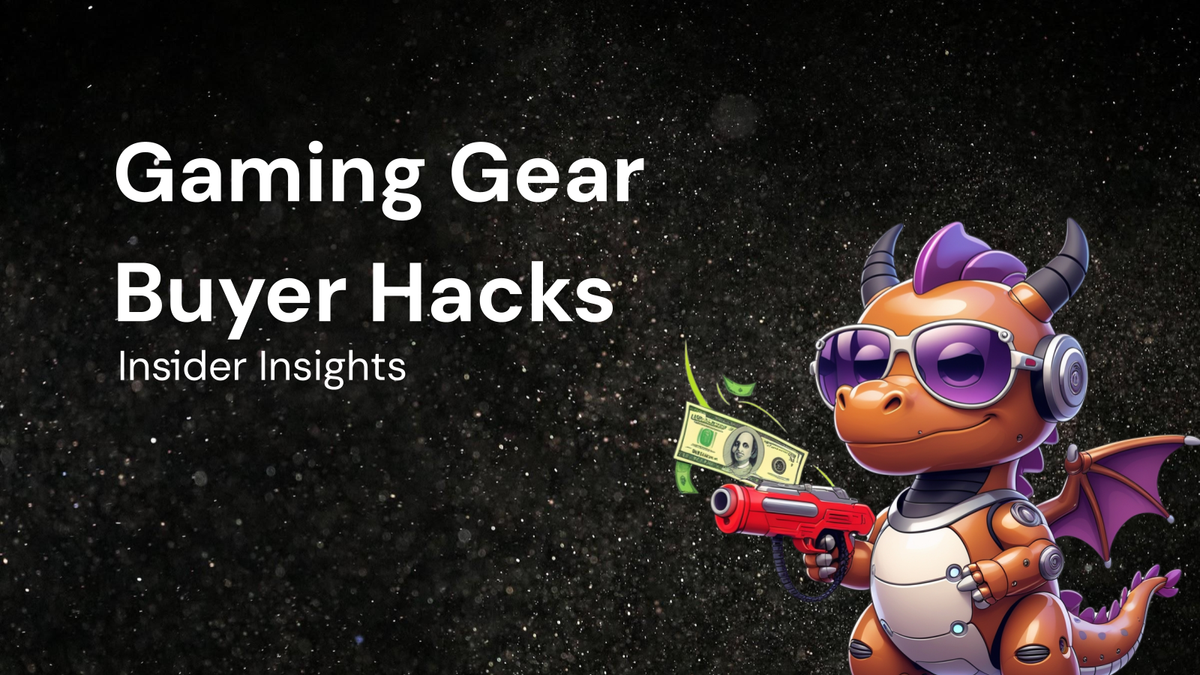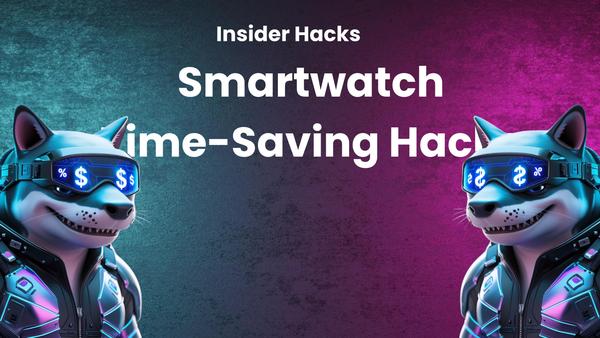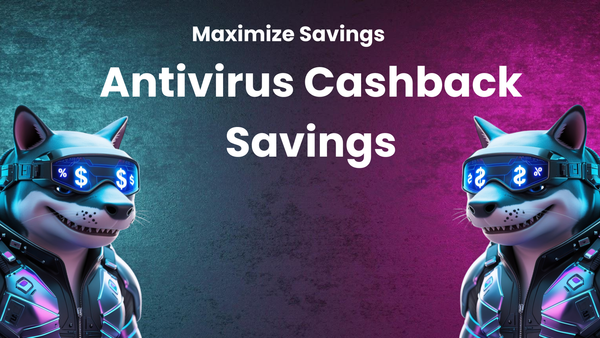Insider Hacks for Understanding Gaming Gear Buyer Behavior

Insider Hacks for Understanding Gaming Gear Buyer Behavior
The gaming industry is a behemoth, a multi-billion dollar ecosystem fueled by passion, competition, and the relentless pursuit of immersion. At the heart of this vibrant world lies the gaming gear market, a complex landscape where keyboards click, mice glide, headsets boom, and monitors illuminate countless virtual battles. Understanding what drives gamers to purchase specific equipment is crucial for anyone looking to succeed in this space, whether you're a manufacturer, retailer, marketer, or even a content creator aiming to provide insightful recommendations.
This isn't just about knowing that gamers want "good" gear. It's about understanding the why behind their choices, the intricate blend of performance needs, aesthetic preferences, community influence, and psychological drivers that dictate their spending habits. This blog dives deep into the insider hacks for understanding gaming gear buyer behavior, offering a comprehensive look at the key factors influencing their decisions and practical strategies for tapping into this lucrative market.
I. Beyond the Specs: The Core Drivers of Gaming Gear Purchase Decisions
Before diving into specific strategies, it's crucial to understand the fundamental motivations that drive gaming gear purchases. These extend far beyond simply "needing a mouse and keyboard."
- Performance Enhancement: This is the cornerstone of the gaming gear market. Gamers are constantly seeking equipment that will give them a competitive edge. This translates to:
- Reduced Input Lag: Milliseconds matter in competitive games. Gamers obsess over response times, polling rates, and low-latency connections.
- Precision and Accuracy: Whether it's pinpoint accuracy in aiming with a mouse or precise keyboard control, gamers need gear that responds perfectly to their commands.
- Customization and Optimization: The ability to fine-tune settings, customize button mappings, and optimize performance for specific games is highly valued.
- Immersion and Experience: Gaming isn't just about winning; it's about escaping into another world. Gaming gear plays a vital role in creating a more immersive and engaging experience:
- High-Quality Audio: Surround sound headsets, powerful speakers, and noise-canceling technology can transport gamers into the heart of the action.
- Visual Fidelity: High refresh rate monitors, vibrant colors, and stunning resolutions contribute to a visually captivating experience.
- Tactile Feedback: Mechanical keyboards, force feedback joysticks, and haptic feedback controllers add another layer of sensory immersion.
- Aesthetic and Personalization: Gaming gear is an extension of a gamer's personality and identity. They want equipment that looks good and reflects their individual style:
- RGB Lighting: Customizable RGB lighting is a staple in the gaming world, allowing gamers to personalize their setup with a wide range of colors and effects.
- Design and Aesthetics: Sleek designs, aggressive styling, and unique color schemes appeal to different tastes within the gaming community.
- Branding and Affiliation: Gamers often align themselves with specific brands or esports teams and choose gear that reflects their allegiance.
- Social Influence and Community: The gaming community plays a significant role in influencing purchase decisions:
- Streamer and Influencer Recommendations: Gamers often look to their favorite streamers and content creators for product recommendations and reviews.
- Peer Reviews and Online Forums: Online forums, Reddit threads, and product review websites are crucial sources of information and social validation.
- Brand Reputation and Trust: Established brands with a reputation for quality and performance are often preferred over lesser-known alternatives.
- Psychological Factors: Beyond practical needs, psychological factors can also influence gaming gear purchases:
- Fear of Missing Out (FOMO): The desire to have the latest and greatest equipment can drive impulsive purchases.
- Status and Prestige: High-end gaming gear can be a status symbol within the gaming community.
- Perceived Value and Return on Investment: Gamers are willing to invest in quality gear if they believe it will improve their performance and enhance their enjoyment of gaming.
II. Decoding the Demographics: Segmenting the Gaming Gear Market
The gaming community is far from a monolithic entity. Understanding the different segments within the market is crucial for tailoring marketing strategies and product development.
- Casual Gamers: These gamers play for fun and relaxation, often focusing on single-player games or cooperative multiplayer experiences. They prioritize comfort, ease of use, and affordability. They are less concerned with competitive performance and more interested in immersive experiences and aesthetically pleasing designs.
- Gear Priorities: Comfortable headsets, ergonomic mice, and visually appealing keyboards.
- Influencers: Family-friendly gaming channels, Let's Play content creators, and general tech reviewers.
- Competitive Gamers: These gamers are driven by competition and the desire to improve their skills. They prioritize performance, precision, and customization. They are willing to invest in high-end gear that gives them a competitive edge.
- Gear Priorities: Low-latency monitors, high-performance mice, mechanical keyboards with fast response times, and noise-canceling headsets.
- Influencers: Professional esports players, competitive gaming streamers, and hardware reviewers specializing in performance.
- PC Enthusiasts: These gamers are passionate about building and customizing their own PCs. They prioritize performance, aesthetics, and customization options. They are willing to invest in high-end components and peripherals.
- Gear Priorities: High-end graphics cards, powerful processors, custom water cooling systems, mechanical keyboards with customizable keycaps, and modular mice with adjustable weights.
- Influencers: Hardware reviewers, PC building experts, and overclocking enthusiasts.
- Console Gamers: These gamers primarily play on consoles, such as PlayStation, Xbox, or Nintendo Switch. They often prioritize ease of use, convenience, and affordability. They are also influenced by brand loyalty and exclusive peripherals.
- Gear Priorities: Comfortable headsets designed for console gaming, ergonomic controllers, and high-quality monitors optimized for console gaming.
- Influencers: Console-specific gaming channels, walkthrough creators, and reviewers focused on console peripherals.
- Mobile Gamers: This rapidly growing segment primarily plays games on smartphones and tablets. They prioritize portability, convenience, and battery life. They are also influenced by game-specific peripherals and accessories.
- Gear Priorities: Bluetooth controllers, portable gaming headsets, and cooling devices for mobile phones.
- Influencers: Mobile gaming streamers, app reviewers, and content creators specializing in mobile gaming accessories.
III. The Path to Purchase: Understanding the Gamer's Buying Journey
Understanding the steps a gamer takes before making a purchase is crucial for effectively targeting them with marketing messages.
- Awareness: Gamers become aware of a new product through various channels:
- Online Advertising: Targeted ads on gaming websites, social media platforms, and YouTube.
- Social Media: Posts from influencers, brands, and fellow gamers.
- Streaming Platforms: Product placements and recommendations from streamers.
- Online Forums and Communities: Discussions and reviews on online forums and Reddit threads.
- Research: Once aware of a product, gamers will conduct thorough research:
- Product Reviews: Reading reviews from reputable sources and fellow gamers.
- Comparison Shopping: Comparing prices and features across different retailers and brands.
- Technical Specifications: Analyzing technical specifications, such as response times, DPI, and polling rates.
- Watching Unboxing and Review Videos: Visual demonstrations of product features and performance.
- Consideration: Based on their research, gamers will narrow down their options and consider which product best meets their needs and budget:
- Weighing Pros and Cons: Evaluating the strengths and weaknesses of each product.
- Reading User Reviews: Gaining insights from other gamers who have purchased and used the product.
- Seeking Recommendations: Asking for advice from friends, online communities, and experts.
- Purchase: Finally, gamers will make a purchase decision based on their research, consideration, and budget:
- Online Retailers: Purchasing from online retailers, such as Amazon, Newegg, or directly from the manufacturer.
- Physical Stores: Visiting physical stores, such as Best Buy or dedicated gaming stores.
- Promotions and Discounts: Taking advantage of sales, discounts, and promotional offers.
- Post-Purchase: The gamer's journey doesn't end with the purchase. Post-purchase experiences can significantly impact brand loyalty and future purchases:
- Product Satisfaction: Ensuring the product meets or exceeds expectations.
- Customer Support: Providing responsive and helpful customer support.
- Community Engagement: Fostering a sense of community and belonging.
IV. Practical Hacks for Tapping into the Gaming Gear Market
Now that we've explored the core drivers, demographics, and buying journey, let's delve into practical hacks for effectively targeting the gaming gear market.
- Leverage Influencer Marketing: Partner with relevant streamers and content creators to promote your products.
- Identify Target Audience: Choose influencers whose audience aligns with your target demographic.
- Authenticity is Key: Ensure the partnership feels authentic and genuine.
- Track Performance: Monitor the performance of influencer campaigns and measure ROI.
- Optimize for Search Engines: Ensure your products are easily discoverable through search engines like Google.
- Keyword Research: Identify relevant keywords that gamers use when searching for gaming gear.
- Product Page Optimization: Optimize product pages with relevant keywords, high-quality images, and detailed descriptions.
- SEO-Friendly Content: Create blog posts and articles that address common gamer queries and concerns.
- Engage with the Community: Participate in online forums, Reddit threads, and social media discussions.
- Provide Value: Offer helpful advice, answer questions, and share your expertise.
- Gather Feedback: Solicit feedback from gamers on your products and services.
- Build Relationships: Foster relationships with key influencers and community members.
- Offer Customization Options: Allow gamers to personalize their gear with customizable RGB lighting, keycaps, and other accessories.
- Modular Designs: Design products with modular components that can be easily swapped out and customized.
- Software Integration: Provide software that allows gamers to customize lighting effects, button mappings, and other settings.
- Focus on Performance and Reliability: Prioritize performance and reliability in your product design and manufacturing.
- Rigorous Testing: Conduct rigorous testing to ensure your products meet the demands of competitive gaming.
- High-Quality Components: Use high-quality components that are built to last.
- Warranty and Support: Offer a comprehensive warranty and responsive customer support.
- Showcase Your Products with High-Quality Visuals: Invest in professional photography and videography to showcase your products in the best possible light.
- Product Demos: Create videos that demonstrate the key features and benefits of your products.
- Lifestyle Imagery: Use lifestyle imagery to show your products in action in a gaming environment.
- 360-Degree Views: Provide 360-degree views of your products to allow customers to examine them from all angles.
- Run Targeted Advertising Campaigns: Use targeted advertising on social media and gaming websites to reach specific demographics.
- Demographic Targeting: Target ads based on age, gender, location, and interests.
- Interest-Based Targeting: Target ads based on gaming preferences, such as specific games or genres.
- Retargeting: Retarget ads to users who have previously visited your website or interacted with your brand.
- Offer Competitive Pricing and Promotions: Provide competitive pricing and attractive promotions to incentivize purchases.
- Sales and Discounts: Run regular sales and offer discounts on popular products.
- Bundle Deals: Offer bundle deals that combine multiple products at a discounted price.
- Free Shipping: Offer free shipping on orders over a certain amount.
V. Staying Ahead of the Curve: Adapting to Evolving Trends
The gaming gear market is constantly evolving, so it's crucial to stay ahead of the curve and adapt to emerging trends.
- Virtual Reality (VR) and Augmented Reality (AR): As VR and AR technology becomes more mainstream, the demand for specialized gaming gear will continue to grow.
- Cloud Gaming: Cloud gaming platforms are reducing the need for expensive hardware, but gamers will still need quality peripherals to enjoy a seamless experience.
- Esports Growth: The continued growth of esports will drive demand for high-performance gaming gear and specialized training equipment.
- Sustainability: Consumers are increasingly concerned about the environmental impact of their purchases, so sustainable gaming gear will become more appealing.
- Accessibility: Making gaming gear more accessible to gamers with disabilities will be an increasingly important consideration.
Conclusion:
Understanding gaming gear buyer behavior is a complex but rewarding endeavor. By understanding the core drivers of their purchase decisions, segmenting the market effectively, and mapping the gamer's buying journey, you can develop targeted marketing strategies and create products that resonate with this passionate and discerning audience. By leveraging influencer marketing, optimizing for search engines, engaging with the community, and staying ahead of the curve, you can position your brand for success in the dynamic and ever-evolving gaming gear market. Remember that at its core, the gaming gear market is driven by the desire for performance, immersion, and self-expression. By catering to these needs, you can build a loyal customer base and thrive in this exciting industry.




